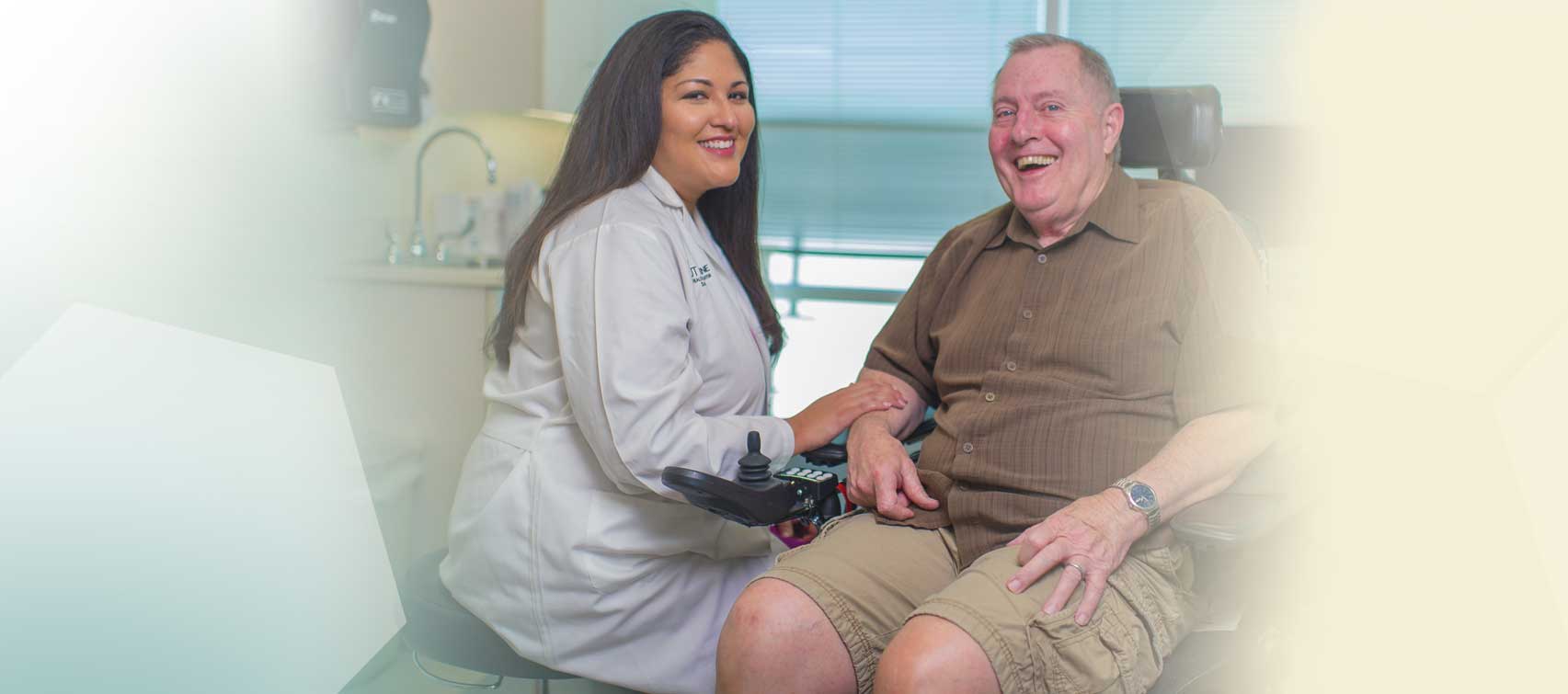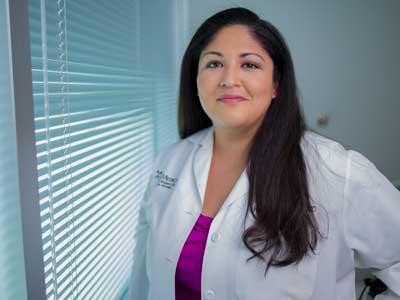When she was growing up, Rebecca Romero, M.D., remembers a much older cousin who was diagnosed in her 20s with multiple sclerosis.
“My cousin was in the prime of her life,” Dr. Romero said. ”After the diagnosis, we didn’t see her again. Even as a child, I wondered why she went into hiding. I thought it was so sad.”
Years later, after earning her bachelor’s degree in biology from Rice University in Houston, Dr. Romero completed her medical degree at the UT Health Science Center San Antonio. She then began her residency in neurology at the Health Science Center.
During this time, Dr. Romero said she and the other residents saw hospital patients in their 20s and 30s who were newly diagnosed with multiple sclerosis, which is a chronic disease that damages the myelin in the central nervous system. This results in damage to the nerve fibers, which interfere with the transmission of nerve signals between the brain and the spinal cord and other parts of the body.
“There was no guidance on how to treat them. We did not have a mentor to ask questions,” she said. “Some of these patients were so young and were worrying about fertility issues, maintaining employment, raising children and passing the disease on to their children.”
Like her cousin, these patients were in the prime of their lives. “I wanted to learn how to treat them. I wanted to know how I could improve their quality of life. I didn’t want anyone with MS to ever go into hiding again,” Dr. Romero added.
During the third year of her residency, she applied for and received grants to attend special conferences and meetings to discuss MS with experts from around the country.
“I decided to do a fellowship in multiple sclerosis from the University of Chicago. I received a grant from the National Multiple Sclerosis Society to do a clinical fellowship in MS there. I decided to stay a second year to do research on MS and neuroimaging,” she explained.
Dr. Romero said her ultimate goal after completing the fellowship was to return to San Antonio and help set up an MS clinic. “I saw a large void here. There are a lot of patients and very few specialists in MS. And, I wanted to be able to teach residents,” she said.
After completing her MS fellowship, she was recruited by Robin L. Brey, M.D., chair of the Department of Neurology in the School of Medicine, to build a comprehensive clinic.
She took the newly established Multiple Sclerosis Clinic by UT Medicine San Antonio, the clinical practice of the School of Medicine at the UT Health Science Center, from a small part-time clinic to a nationally recognized MS clinic. The clinic is located at the Medical Arts & Research Center, also known as the MARC, which is the primary clinical home of UT Medicine.
Dr. Romero and Francisco González-Scarano, M.D., dean of the School of Medicine and a UT Medicine neurologist, see more than 300 patients a year at the MARC. They also see patients at the Robert B. Green Campus of the University Health System.
“The center is growing so rapidly that we added a nurse practitioner who is a certified specialist in MS. She helps with a lot of patient follow-up. We are able to help twice as many patients because of our nurse practitioner,” Dr. Romero said.
The MS Clinic was recently designated a Partner in MS Care by the National Multiple Sclerosis Society. The society’s Partners in MS Care program recognizes and supports quality MS care, and it encourages strong partnerships between MS clinics and the national society to create optimal care and support for people living with multiple sclerosis.
“Now we are working to become a Center for Comprehensive MS Care. We want to become a multi-disciplinary model of care,” she said. “By being housed at the MARC, we are able to refer our patients to other specialists – such as urologists, physical therapists and ophthalmologists – in the same building.”
Dr. Romero said treating patients with MS is very rewarding because they are able to modify the disease. “We can change the course of their disease. I think that is very powerful for the patient and the physician. We can improve their quality of life.”
Because of clinical research, there are now new medications that slow progression of disability so patients can continue to be employed, she said. “I have worked with all the medicines that are out there to treat MS. I like to aggressively treat MS. My patients deserve the best treatment and the best quality of life.”

